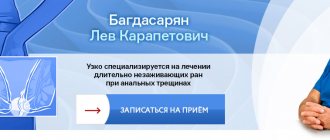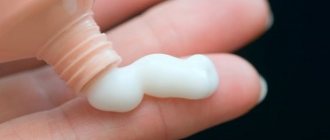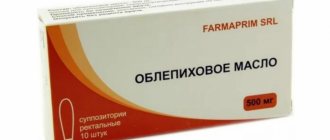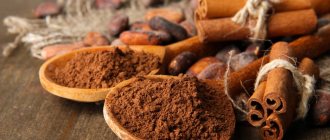Hemorrhoids (hemorrhoidal disease)
is the collective name for pathologies of the rectum, in which the internal and external hemorrhoidal plexuses located in the anal canal increase in size.
If the outflow of blood is disrupted, internal nodes can fall out and bleed, and sometimes complications arise, for example, thrombosis, which is accompanied by severe pain. Most often, this disease is caused by a genetic predisposition, but the “trigger mechanism” for the development of hemorrhoids most often becomes everyday habits, lifestyle and natural physiological processes (hemorrhoids during pregnancy, in patients over 50 years old)
.
We have collected several important facts about the prevention and treatment of hemorrhoids in one article to refute misconceptions and recall the main points that will help you avoid becoming a victim of this “popular” disease.
If you have the following symptoms of hemorrhoids:
- pain when defecating, sitting and walking,
- bloody stool
- prolapse of hemorrhoids,
- itching in the anus
consultation with a proctologist is required
! A doctor of this specialization will help solve your problem carefully and effectively by prescribing competent therapy.
Our clinic is hosted by a leading proctologist, author of scientific works, and a surgeon with more than 40 years of experience
Sergey Dmitrievich Trukhmanov .
You can make an appointment with the doctor in person or take
an online consultation with a proctologist .
Online consultation with proctologist S.D. Trukhmanov
will be useful if:
1) you do not have the opportunity to come to the Pirogov clinic;
2) you would like to receive expert advice from a doctor and adjust conservative treatment;
3) surgery for hemorrhoids was indicated for you.
To prevent hemorrhoids, it is important to maintain a drinking regime.
Glass of water
on an empty stomach or
a cup of coffee
daily before the morning toilet improves intestinal motility.
For constipation, it is useful to drink water containing magnesium ions or sulfate
. Drink a glass of mineralized water at room temperature 3 times a day.
Special herbal infusions for the intestines and even ordinary green tea are useful. The latter contains flavonoids - natural antioxidants and tannins, which increase vascular tone and reduce the severity of the inflammatory process in the tissues of the anus. It is important that green tea is of high quality and properly brewed. For gastritis and stomach ulcers, green tea may be contraindicated.
at least 2 liters of liquid per day
.
cognac is extremely harmful to the intestines.
- it has a toxic toxic effect on the cavernous tissue of hemorrhoids and “corrodes” it.
Types and degrees of development of the disease
Based on where the blood clot formed, proctologists distinguish between internal and external thrombosis, as well as a mixed type, in which the pathology affects the node on both sides. Thrombosis of the external hemorrhoid is most common, so most of the information will concern this type of pathology.
There are three main degrees of thrombosis of hemorrhoids, which correspond to the successive stages of its development.
- Blood clots begin to form. Because of this, pain appears, but not accompanied by an inflammatory process.
- Inflammation appears, accompanied by the growth of cones and increased pain. There may be an increase in temperature, swelling and redness of the skin at the site of localization of thrombosis of hemorrhoids.
- At the final stage of thrombosis of hemorrhoids, the area surrounding the site and the groin area are affected. There is a risk of severe complications.
The main characteristics of each stage of hemorrhoidal thrombosis are summarized in the table.
| Sign | 1st stage | 2nd stage | 3rd stage |
| The dimension that a node has | Small | Average | Large |
| Elasticity of the bud | Highly elastic | Tight elastic | Very dense |
| Color | Slight redness | Dark red or bluish tone | Black necrotic areas or areas with a white coating |
| Degree of pain | Moderate, aggravated by physical contact | Pronounced | Tormenting |
| Localization | Outside the rectum | Inside or outside the anal area | Domestic or mixed |
| Swelling | Unexpressed | Edema and hyperemia surrounding the node | Pronounced with hyperemia of the entire anal part |
| Sphincter spasms | No | Present | Expressed process |
| Bleeding | No | Mostly no | Expressed |
What foods are good for preventing intestinal diseases?
In order not to risk your health and not be a victim of hemorrhoids, it is recommended to include more vegetables, fruits and fiber in your daily diet.
For the prevention of hemorrhoids it is useful:
- Fiber-rich fruits and vegetables (apples, avocado, pumpkin, broccoli)
- Beetroot and beet salad
- Freshly squeezed juice, especially pumpkin juice
- Prunes
- Chew food thoroughly
Harmful:
- Hot, spicy, fried, smoked
- Marinades
- Eat dry
- Soda
- Whole milk
- Baking and flour
- Lots of sweets
- Pasta, white rice and bread
- Canned food
If microflora disorders are detected, it is better to cure them. Sometimes it is necessary to prescribe probiotics that restore the intestinal microbiome, and enzymes that help digest food.
*For patients with diagnosed intestinal disease, the diet is individually prescribed by a doctor.
Is it true that anal sex leads to hemorrhoids?
There is no data that would reliably confirm the correlation between anal sex and, for example, hemorrhoids. The main danger of anal sex is, of course, the transmission of infections, for example, the human papillomavirus, which causes cancer. human papillomas. Even Koch bacilli - the culprit of tuberculosis - in 5% of cases live in the rectum, and not just in the lungs.
“Non-standard” sex can lead to anal fissures, damage to the mucous membrane, and bleeding. Insufficiency of the anal sphincter also develops, which can lead to fecal incontinence. And weakening of the ligaments leads to prolapse of hemorrhoids.
Evidence-based medicine does not answer this question, but it’s better to be careful.
Symptoms of the acute form of the disease
Symptoms of acute hemorrhoids in young women are most often associated with pregnancy or childbirth. The appearance of an enlarged hemorrhoid constipation characteristic of this period .
Acute dilatation of hemorrhoidal veins manifests itself with sharp pain , which becomes unbearable during bowel movements. In addition, the pain syndrome can intensify while walking, as well as with increased intra-abdominal pressure during straining, coughing, laughing, and hiccups.
Another characteristic sign of the acute form of the disease is bleeding from the dilated veins of the rectum. This symptom manifests itself as fresh blood on the surface of the stool.
Often hemorrhoids in women are combined with anal fissure. In such cases, blood stains on toilet paper and underwear appear even more often after defecation.
Is it possible to cure hemorrhoids using traditional methods?
Herbal baths, decoctions and compresses are appropriate only as part of combined conservative therapy for uncomplicated hemorrhoids. We are not aware of cases in which these isolated measures would be truly effective. Traditional methods of treating hemorrhoids should be treated especially carefully and from a critical point of view. Still, we are talking about a serious pathology of the rectum, often with cracks, prolapse of nodes and even thrombosis. Self-medication can be dangerous.
A separate group of proctologist patients are those whom doctors treat for complications after treatment with traditional methods.
They will definitely not help with hemorrhoids:
- ice candles
- fresh potato paste
- aloe leaf
- cucumbers from the garden
- steam baths
- leeches
Medicine for hemorrhoids
Of course, there is a cure for hemorrhoids.
Modern pharmacology offers us a wide range of different drugs, many of which are actively advertised in the media and via the Internet. These are various types of complex local preparations: ointments, gels, creams, rectal suppositories, microenemas. The active substances included in these medications help to significantly reduce and often completely relieve pain, inflammation and swelling of tissues, normalize blood circulation and promote the resorption of blood clots. There are a lot of similar drugs, as well as the substances that make up them. Each of them has some nuances, so you need to choose them very carefully. It is advisable to first consult with a proctologist before doing this.
Is it true that pregnancy can cause hemorrhoids?
Unfortunately, hemorrhoids during pregnancy are a really common problem. The fact is that in pregnant women, the growing uterus puts pressure on the lower abdomen. It is the compression of the veins, combined with low physical activity, that leads to the development of hemorrhoids during pregnancy. Very often, the disease makes itself felt in the 2nd trimester of pregnancy, but in the presence of a hereditary predisposition, it manifests itself earlier - already from 10-15 weeks.
If you have problems with the intestines, we recommend treating them in advance, at the stage of
pregnancy planning .
You should not worry about hemorrhoids during pregnancy - they can be treated conservatively (without surgery). We recommend that you consult an experienced doctor: he will give recommendations on adjusting your diet, exercise, and prescribe safe medications.
Treatment of hemorrhoids without surgery: what therapy does the doctor prescribe?
Hemorrhoids are a collective name for diseases of the rectum with a corresponding set of symptoms. The classification of hemorrhoids is extensive, so adequate treatment is prescribed after examination, and recommendations for a treatment regimen are strictly individual.
Generally speaking, treatment for hemorrhoids without surgery includes:
- Correction of diet and diet to normalize the functioning of the gastrointestinal tract;
- Herbal medicines;
- Drug therapy;
- Physiotherapy;
- Minimally invasive non-surgical treatment methods: sclerotherapy, coagulation or ligation of hemorrhoids.
The effectiveness of conservative therapy
But you need to understand that traditional and non-traditional methods do not get rid of the basis of the disease, the hemorrhoids themselves. The latter, under the influence of treatment, are somewhat “strengthened”, blood discharge decreases, but over time everything returns to normal. The patients themselves speak about this - “old-timers from hemorrhoids”, who have been trying to get rid of hemorrhoids by various means for decades. Conservative therapy is effective mainly in the early stages of the disease. It is also necessary when preparing patients for surgical treatment, in the postoperative period, and finally, when radical treatment is delayed for one reason or another.
Is it true that hemorrhoid surgery is painful?
Any surgical intervention is associated with some discomfort during the rehabilitation period. However, our clinic performs minimally traumatic operations using a laser or ultrasonic scalpel, as well as using the improved technique of Milligan-Morgan, Longo, etc. Thanks to modern technology and the experience of our surgeons, patients recover after surgery without prolonged bed rest.
Read more about the treatment of hemorrhoids at the Pirogov Clinic (St. Petersburg)
9. What methods of intestinal examination exist?
This or an X-ray examination - irrigoscopy
,
passage of barium through the intestines;
or endoscopic: sigmoidoscopy, sigmoidoscopy, colonoscopy. Capsule endoscopy also allows complete visualization of the small intestinal cavity.
For other methods there are separate, strictly limited indications.
Radical treatment of pathology
Minimally invasive methods
Doctors treat chronic hemorrhoids with surgical methods. At the initial stages of the disease, preference is given to minimally invasive techniques, which are carried out on an outpatient basis (without placing the patient in a hospital) and provide for a short rehabilitation period.
An important advantage of low-traumatic operations is a short list of contraindications. The list of methods that are suitable for most patients includes: • sclerotherapy (injection into dilated veins of substances that cause “soldering” of the walls of dilated veins); • infrared coagulation (cauterization of the leg of the node); • ligation of the internal hemorrhoid with latex rings.
Sclerotherapy and infrared coagulation are used at stages I – II of the development of internal hemorrhoids. The effectiveness of these methods at stage I is 85%, and at stage II – about 72%. If the node is ligated with latex rings, the effectiveness exceeds 93%.
Operation hemorrhoidectomy
Hemorrhoidectomy is the removal of enlarged hemorrhoids using surgical methods, that is, using a scalpel.
Such treatment must be carried out in a hospital. The rehabilitation period is much longer and is less well tolerated by patients. Therefore, surgical removal of nodes is carried out only in the last stages of the disease , when minimally invasive techniques are no longer effective.
Hemorrhoidectomy can be combined with disarterization of hemorrhoids under ultrasound control. This method is often used for stage III internal hemorrhoids.
The choice of surgical intervention method depends on the number of enlarged nodes, their location, as well as the presence of complications and concomitant pathologies.








